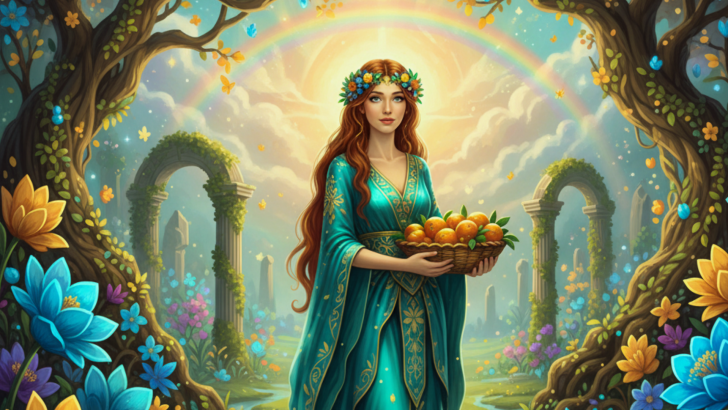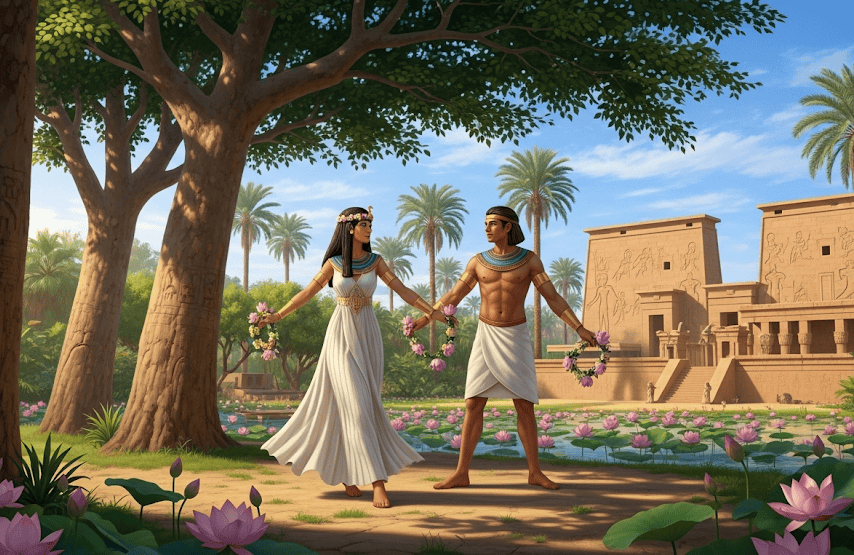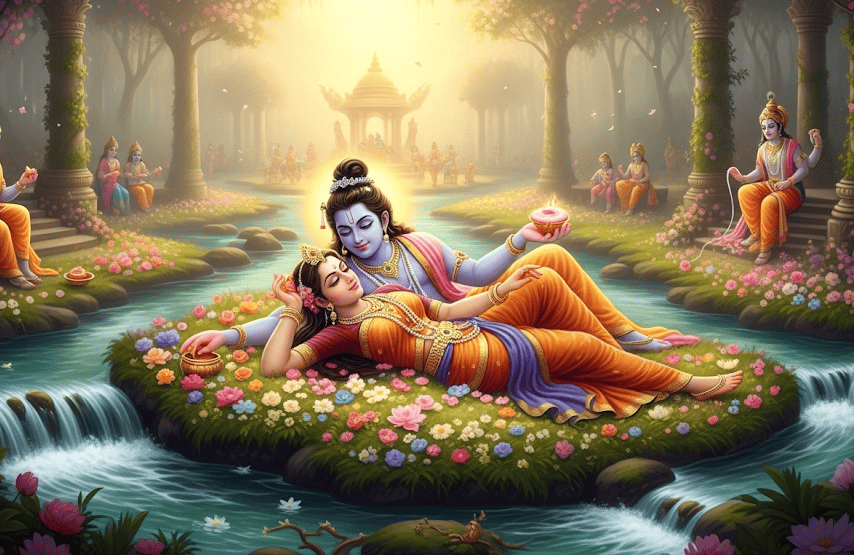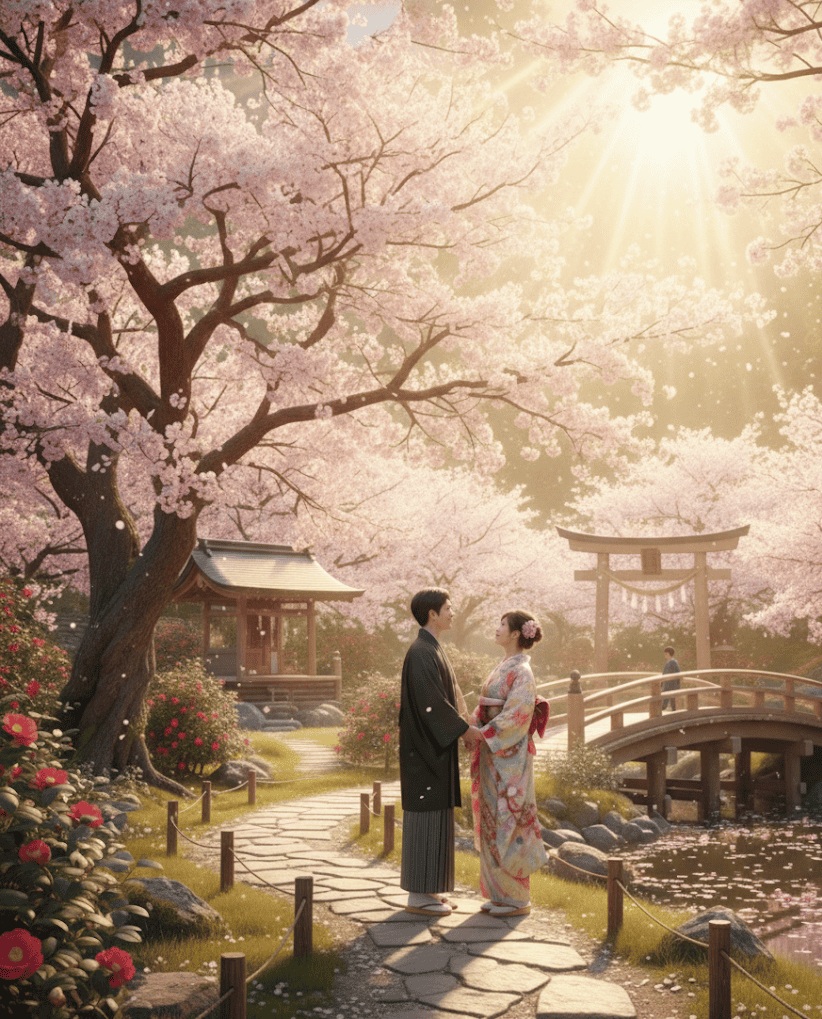Since the earliest myths, gardens have been seen as places where love blossoms and beauty flourishes.
They are not just spaces filled with flowers and greenery but living symbols of romance, transformation, and divine power.
Gods and goddesses across different cultures claimed gardens as their own, each one infused with mystery and charm.
In these sacred spaces, lovers met, spirits lingered, and mortals often found themselves entangled in extraordinary tales of passion and desire.
Let us walk through ten sacred gardens of the gods that were celebrated for their connection to romance and beauty.
1. The Garden of Aphrodite in Cyprus
Aphrodite, the Greek goddess of love and beauty, was said to have had lush gardens on the island of Cyprus.
These gardens were filled with roses, myrtles, and fragrant herbs that symbolized desire and attraction.
Couples prayed there for blessings in love, believing that Aphrodite herself walked among the blooms.
The garden became a symbol of how nature and divinity worked together to inspire passion and tenderness. Even today, Cyprus is called the island of love, carrying the echoes of these ancient myths.
2. The Hanging Gardens of Babylon
One of the Seven Wonders of the Ancient World, the Hanging Gardens are often described as a marvel built for love.
According to legend, King Nebuchadnezzar II created the gardens for his wife, Amytis, who missed the green mountains of her homeland.
The terraced gardens were filled with exotic plants, cascading waterfalls, and flowering trees, becoming a place of romance and longing.
While historians still debate whether the gardens truly existed, their mythic image as a gift of love has endured.
They remind us that sometimes devotion takes the form of grand gestures carved into history.
3. The Garden of Hera at Samos
Hera, goddess of marriage and fidelity, was honored with a sacred garden in Samos, where her temple stood tall.
The garden was filled with pomegranates, lilies, and sacred trees, all tied to fertility and devotion.
Couples visited the garden to ask for Hera’s blessing on their unions, leaving offerings among the flowers.
It was believed that Hera herself tended the plants, keeping the blossoms eternal and vibrant.
The garden reflected her role as the guardian of partnerships, making it a haven for those seeking stability and love.
4. The Norse Idunn’s Orchard of Apples
In Norse mythology, Idunn, the goddess of youth and renewal, kept a garden filled with golden apples.
These apples were not only symbols of beauty but also of vitality and longevity.
The gods relied on them to stay youthful, and their link to attraction and strength was undeniable.
In some stories, the orchard became a place of temptation and desire, as many sought the secret of Idunn’s fruit.
For lovers, the golden apples symbolized eternal beauty and the freshness of passion that never fades.
5. The Garden of Venus in Roman Myth
Venus, the Roman goddess of love, had gardens dedicated to her in many parts of the empire.
These gardens were lush with roses, violets, and laurel trees, where rituals of love and fertility often took place.
Lovers visited these spaces to ask Venus to bless their romances, leaving small offerings of wine or fruit.
Festivals in her honor often included parades of flowers and garlands, reminding everyone of the power of beauty and charm.
The gardens of Venus embodied the sensual side of love, celebrating both physical attraction and emotional tenderness.
6. The Aztec Tlalocan Paradise Garden
In Aztec belief, Tlalocan was a paradise garden ruled by Tlaloc, the god of rain, and Chalchiuhtlicue, the goddess of rivers and fertility.
Though primarily associated with water and abundance, Tlalocan was also a place of beauty where flowers bloomed in eternal spring.
Lovers who entered this paradise were believed to find joy, renewal, and harmony. The garden represented both the nourishment of the earth and the flowering of human emotions.
For couples, Tlalocan was not only a vision of abundance but also a reminder that love thrives best in a world full of growth and balance.
7. The Celtic Garden of Brigid
Brigid, a goddess of poetry, healing, and fertility, was often associated with gardens of sacred herbs and blossoms.
In Celtic traditions, her gardens were seen as spaces where love could grow alongside creativity and health.
Couples seeking fertility or artistic inspiration visited her shrines, often decorated with flowers and greenery.
The garden was not just about beauty but also about the nurturing of the soul and spirit.
For Brigid’s followers, tending to plants was a sacred act that reflected the care needed in relationships.
8. The Egyptian Gardens of Hathor
Hathor, the Egyptian goddess of love, music, and beauty, was often honored in temple gardens filled with sycamores, lotus flowers, and date palms.
These gardens became places where rituals of love and music intertwined.
Lovers offered garlands and danced under the shade of trees dedicated to Hathor, believing that her blessing would bring harmony and sweetness into their lives.
The gardens also symbolized fertility, as the lotus and palm were linked to abundance and renewal.
Under Hathor’s care, these sacred spaces flourished as eternal havens of romance.
9. The Hindu Nandavana, Garden of the Gods
In Hindu mythology, Nandavana was a celestial garden where gods and goddesses gathered. It was said to be filled with fragrant blossoms, flowing rivers, and eternal spring.
The garden was often visited by Kamadeva, the god of love, and his consort Rati, who embodied passion and attraction.
Couples prayed in honor of this garden, hoping to capture even a fraction of its bliss in their own lives.
The Nandavana represented the ultimate union of love and nature, where every petal and breeze carried divine energy.
10. The Japanese Garden of Amaterasu
Amaterasu, the Shinto sun goddess, was associated with light, beauty, and renewal.
Though not a love goddess in the traditional sense, gardens dedicated to her became sacred spaces where people sought clarity and harmony in their relationships.
Cherry blossoms and camellias filled these gardens, symbolizing fleeting beauty and the tender strength of love.
Couples visited during spring festivals, walking hand in hand beneath the blossoms as prayers for romance and devotion.
The gardens of Amaterasu became living metaphors for love’s brightness and fragility, glowing with divine energy.

Ho sempre sentito una forte connessione con il Divino fin dalla mia nascita. Come autrice e mentore, la mia missione è aiutare gli altri a trovare l'amore, la felicità e la forza interiore nei momenti più bui.











